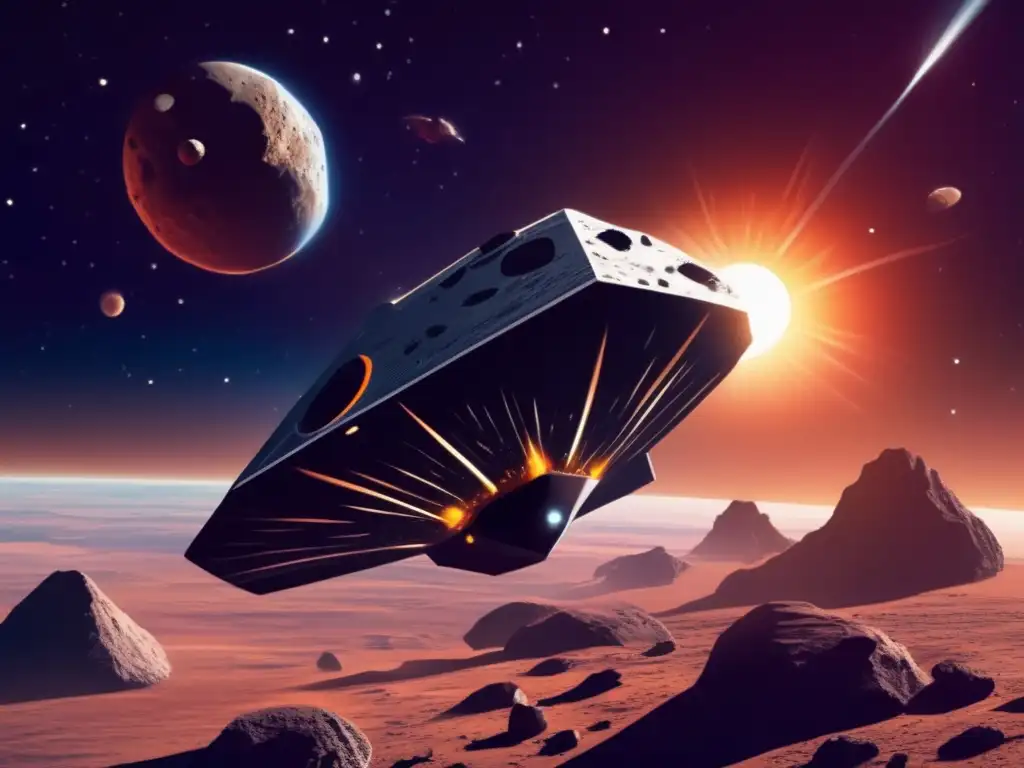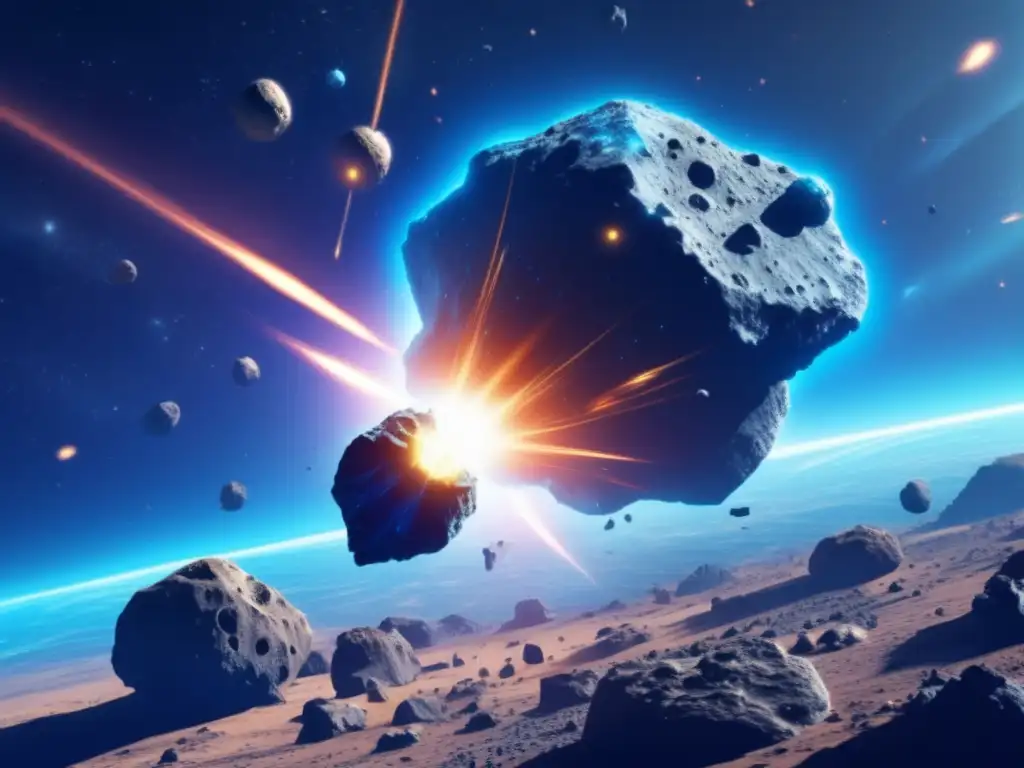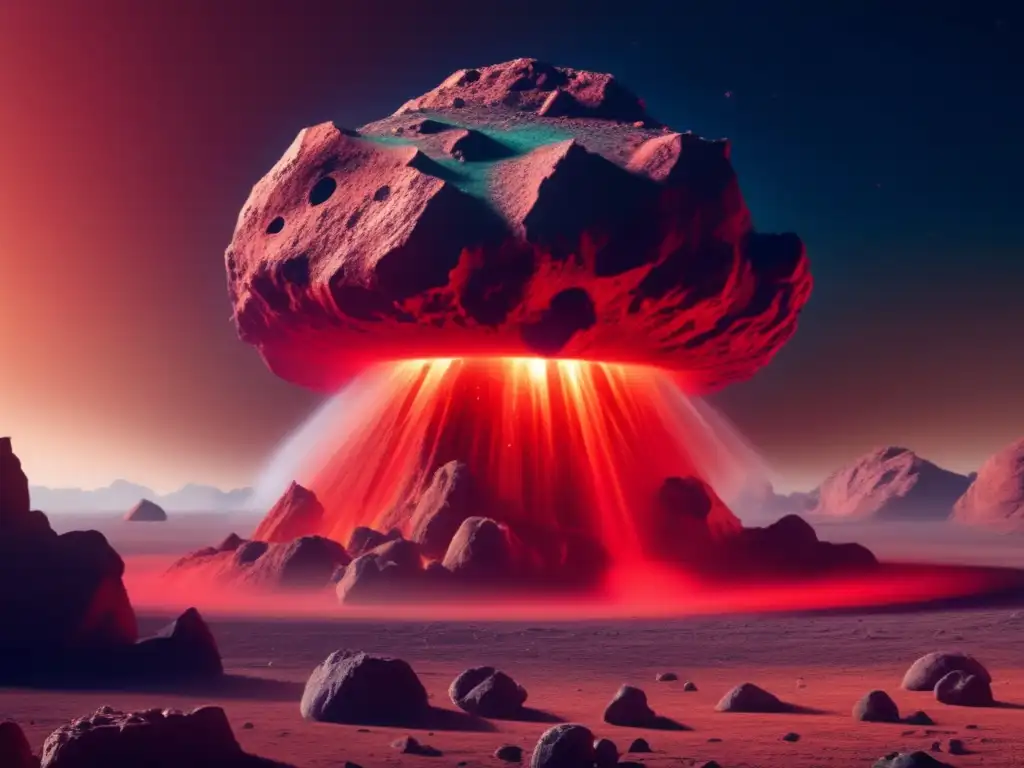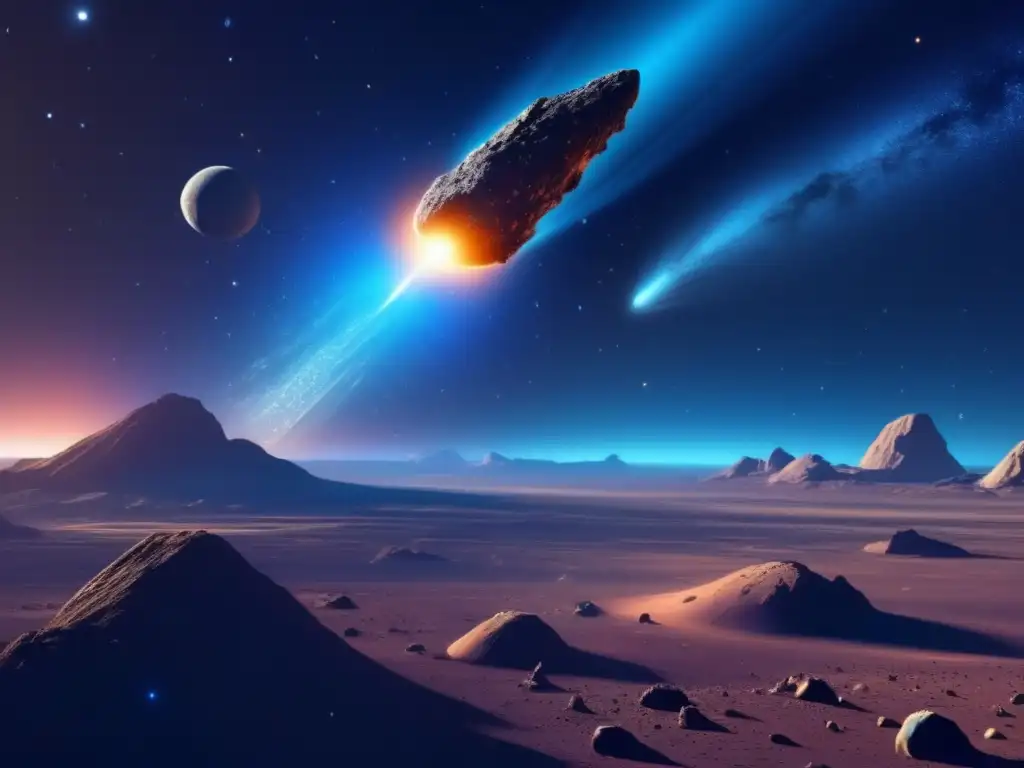Starship Asteroids: Carrying Life Across The Cosmos

Introduction
Asteroids have long been a fascination for humanity, with their potential to provide insights into the history of our solar system, as well as their potential for valuable resources. However, recent research has revealed another exciting possibility for asteroids - they may have played a role in the spread of life throughout the cosmos. In this article, we explore the idea of "starship asteroids" and their potential to carry life across the galaxy.
Are Asteroids Capable of Carrying Life?

What is a Starship Asteroid?
A starship asteroid is an asteroid that has been ejected from its home system and is traveling through the vast distances of interstellar space. While the environment of space is harsh, with intense radiation and extreme temperatures, some asteroids may be able to shield primitive life forms on their surface, allowing them to endure the journey through the vacuum of space.
Evidence of Life on Asteroids?
The idea of life on asteroids may seem far-fetched, but recent research has provided tantalizing hints that it may be possible. In 2015, NASA's Dawn spacecraft discovered organic compounds on the surface of the asteroid Ceres, including carbon-based molecules similar to those found in amino acids, the building blocks of life. In addition, a study published in 2020 suggested that microbes could survive on the surface of asteroids for millions of years, protected by a layer of rock just a few centimeters thick.
The Panspermia Hypothesis
The idea that life on Earth may have originated from elsewhere in the universe is not a new one. The panspermia hypothesis suggests that life may have been transported to Earth on asteroids or comets, either from within our own solar system or from another star system entirely. While still a matter of scientific debate, the possibility that life could be spread through the universe via starship asteroids is an exciting one to consider.
Could Starship Asteroids Seed Other Planets with Life?

The Importance of Water
One of the key requirements for life as we know it is liquid water, which is scarce in the cold, dry environment of space. However, there are some asteroids that are rich in water ice, which could be released when the asteroid impacts a planet or moon. This could provide a crucial source of water for any primitive life forms that might be present on the surface of the newly seeded world.
Challenges to the Idea of Seeding Life
While the idea of starship asteroids carrying life across the cosmos is an intriguing one, there are several challenges to the idea as well. For one, the survival rate of any life forms on the surface of an asteroid is likely to be low, given the harsh conditions of interstellar space. In addition, the process of impacting a planet or moon is a complicated one, and the chances of an asteroid striking a potentially habitable world are relatively low.
The Search for Extraterrestrial Life
Despite the challenges, the idea of starship asteroids seeding other worlds with life is an exciting possibility that highlights the potential for life in the universe to be interconnected in unexpected ways. As we continue to search for signs of life beyond our own planet, the discovery of starship asteroids could provide vital clues to the origins and nature of life in the cosmos.
What Is the Future of Asteroid Research?

The Role of Space Exploration
As our understanding of asteroids and their potential for carrying life continues to grow, the role of space exploration becomes more important than ever before. By sending probes to study asteroids up close, we can gain valuable insights into their composition and behavior, as well as the potential for life to exist on their surfaces. In addition, the ability to redirect and mine asteroids could provide valuable resources for future space exploration missions.
New Discoveries on the Horizon
The coming decades are likely to bring new discoveries in the field of asteroid research, as new tools and technologies are developed to study these fascinating objects. The recent launch of NASA's Lucy mission, which will travel to the Trojan asteroids - a group of asteroids that share Jupiter's orbit around the sun - is just one example of the exciting research opportunities on the horizon.
The Impact of Asteroids on Our Future
As our understanding of asteroids continues to expand, their potential impact on our future cannot be understated. From providing clues to the origins of life in the universe, to supplying valuable resources for space exploration and beyond, asteroids are a vital piece of the cosmic puzzle that scientists will continue to unlock for years to come.
Frequently Asked Questions

-
Could life survive on the surface of an asteroid?
Recent research suggests that certain types of microbes could survive on the surface of asteroids for millions of years, protected by a thin layer of rock.
-
Can asteroids carry life across the cosmos?
While still a matter of scientific debate, the idea of starship asteroids carrying life across the universe is an intriguing one that provides exciting possibilities for the origins and interconnectedness of life in the cosmos.
-
What is the panspermia hypothesis?
The panspermia hypothesis suggests that life on Earth may have originated from elsewhere in the universe, potentially carried here on asteroids or comets.
-
What is the potential impact of asteroid research on our future?
Asteroids have the potential to provide valuable resources for space exploration and beyond, as well as insights into the history and nature of our solar system and the universe as a whole.
-
Could starship asteroids seed other planets with life?
While the chances of this happening are relatively low, the possibility of starship asteroids seeding other worlds with life highlights the interconnectedness of life in the universe and presents exciting possibilities for future discoveries.
Conclusion
Asteroids have long captured the imagination of humanity, and recent research has revealed new and exciting possibilities for these fascinating objects. The idea of starship asteroids carrying life across the cosmos is an intriguing one that highlights the potential for life in the universe to be interconnected in unexpected ways. As we continue to study asteroids up close and unlock their secrets, we may be one step closer to unraveling the mysteries of the universe and our place within it.
If you have any thoughts or comments on this article, please feel free to share them in the comments section below. Thank you for reading, and we invite you to stay engaged with www.asteroidrealm.com for further updates on asteroid research and discoveries.
Additional Resources

For those interested in learning more about asteroids and their potential for carrying life, we recommend the following resources:
- NASA - Was There Life on Asteroid Ceres?
- Space.com - Can Microbes Survive Hitchhiking on Asteroids?
- National Geographic - How Asteroids Might Have Seeded Earth With Life
 Asteroids: The Galactic Greenhouses Of Life
Asteroids: The Galactic Greenhouses Of Life The Origins Of Life: Could The Answer Lie In Asteroids?
The Origins Of Life: Could The Answer Lie In Asteroids? Seeds Of Life: How Asteroids Could Be Spreading Life In The Universe
Seeds Of Life: How Asteroids Could Be Spreading Life In The UniverseIf you want to discover more articles similar to Starship Asteroids: Carrying Life Across The Cosmos, you can visit the Asteroids and Extraterrestrial Life category.
Leave a Reply

Articulos relacionados: